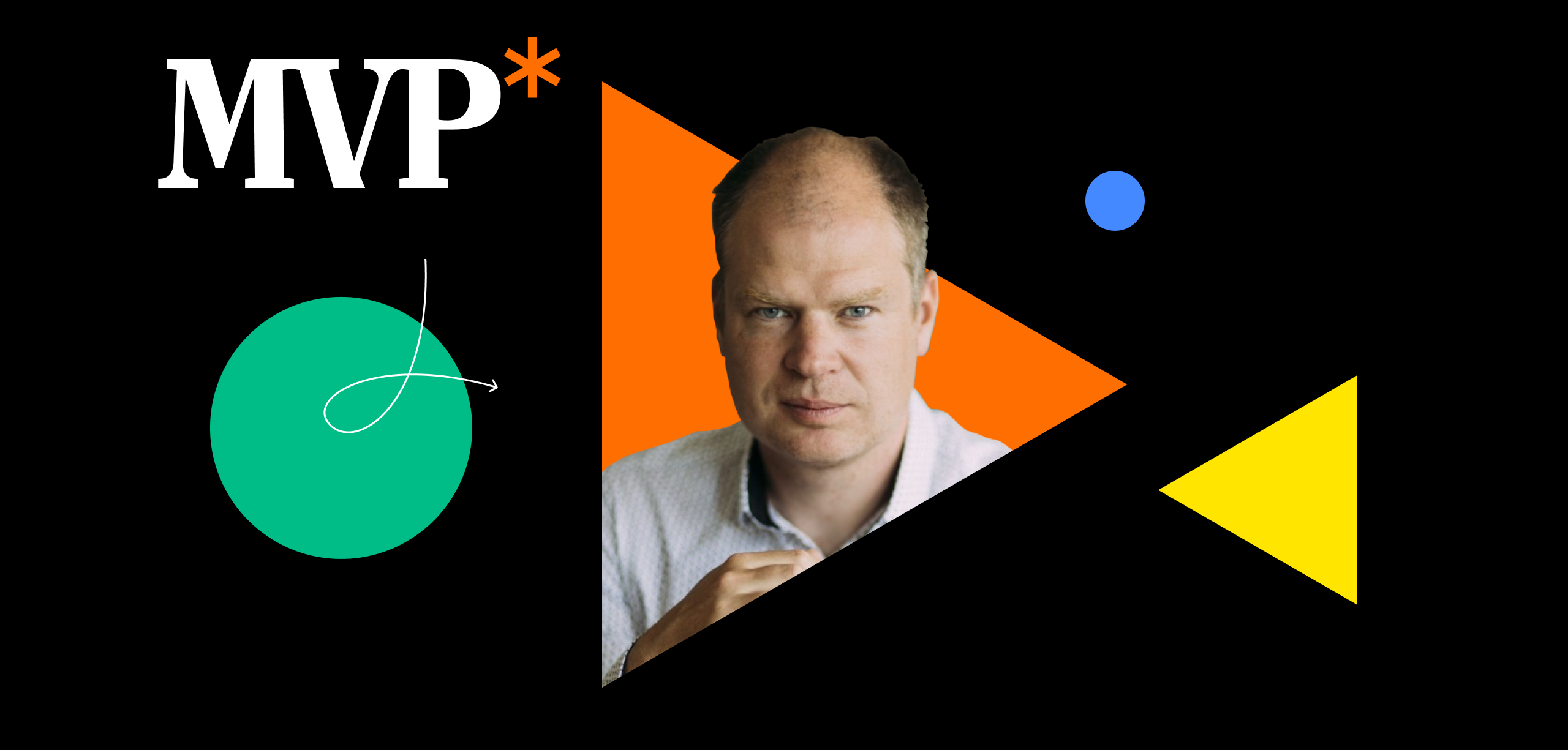The successful implementation of innovations in multinational corporations is often challenging due to their complex and inflexible management structures. However, this is not the case for the COOP Group. Their decentralized management structure allows them to launch innovations in retail that are currently discussed at major international Expos.
In the 26th episode of Minimum Viable Podcast, Michal Blažej talks to the COOP group's innovation leader, Lukáš Nemčík, about what it means that COOP is a cooperative, what are the advantages of this business model, and how it enables them to bring innovations that directly enhance the comfort of customers.
Minimum Viable Podcast is brought to you by the CX design studio Lighting Beetle*. It's usually recorded in the Slovak language, however, you can read an English transcription of this episode below. For more English content, including case studies and handouts, visit our Journal.
The COOP group is a cooperative. What does that mean and what implications does it have?
Cooperatives are a special form of business. On the other hand, it is traditional and, according to the UN declaration, also the fairest way of doing business. Cooperatives are similar to joint-stock companies, with the difference that in a joint-stock company, a few people have a lot of resources, whereas in cooperatives, many people contribute small amounts, accumulate a large sum, and then invest it.
In a joint-stock company, the one who contributes more money has more voting rights. In a cooperative, each member has one vote. Each member elects delegates, and the delegates elect the board of directors and the supervisory committee of individual cooperatives. They then elect national authorities. So, direct democracy was the basis from the beginning.
Jednota is associated with COOP. COOP stands for cooperation. The term COOP has been used in the Czech Republic since 1930. It was the designation for premium products in the Czech Republic, and today, most consumer systems around the world use it. It is an official brand owned by the International Cooperative Alliance, which consists of millions of cooperatives and hundreds of millions of members.
We are part of the International Cooperative Alliance, and at the European level, we have the organization Euro Coop, which brings together food cooperatives in Europe, most of which are named COOP, with a few exceptions.
Are ordinary citizens owners of the COOP Group in the Czech Republic?
Yes. We have over one hundred and thirty thousand of them, which is not much. After World War II, there were two million of them, but it was not in the interest of the communist system to support them, so this tradition was interrupted, and after the revolution, the growth was slow.
For example, Finland, with a population of five million, has 2.6 million cooperative members. Italy has 9 million members, and eighty percent of the customers who shop there are members. The further west you go, the stronger is the tradition, and the further east you go, the weaker it is. Except for South Korea or Japan, where cooperatives serve over half of all households.
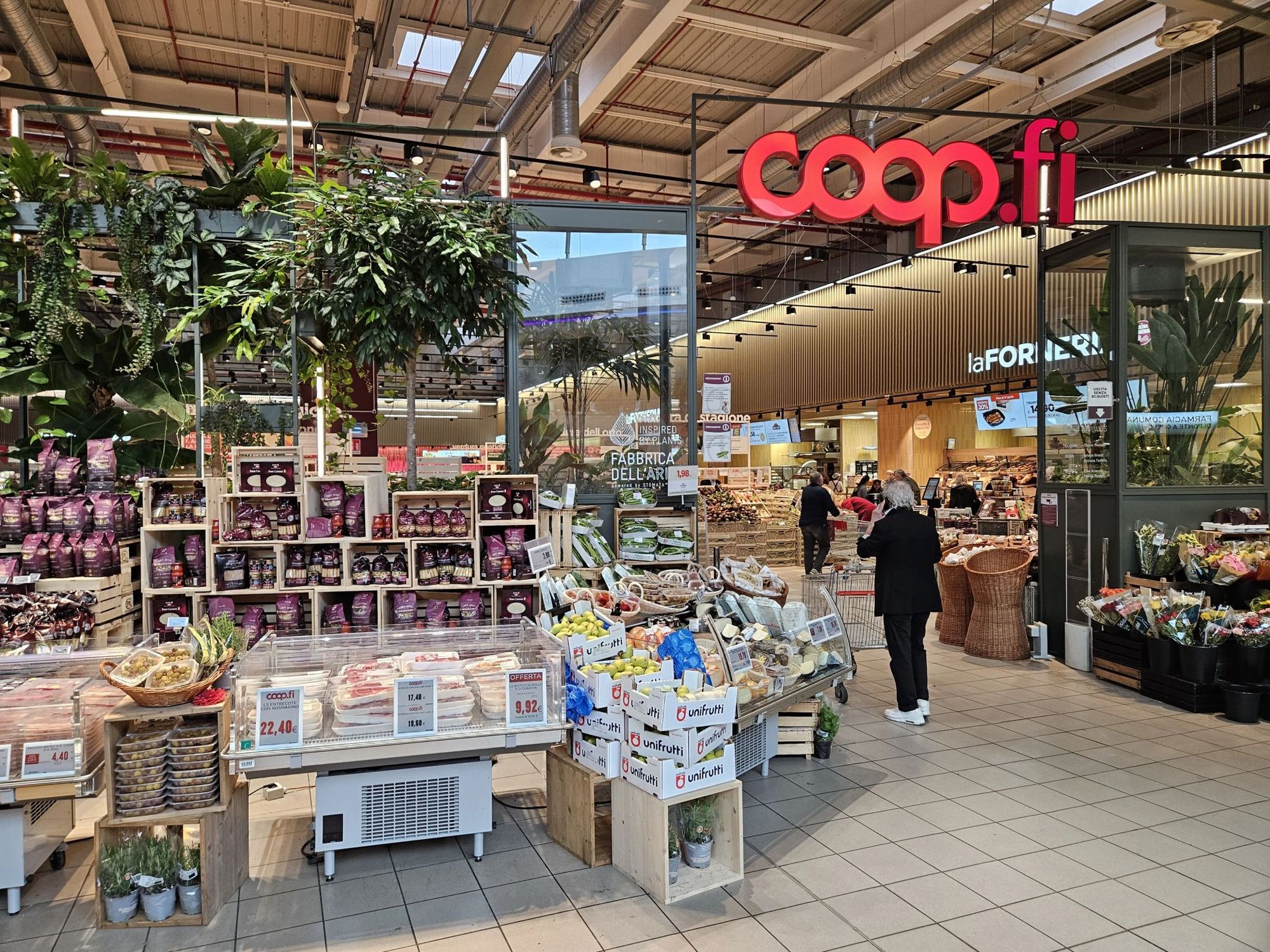
Is the executive and operational structure of the company similar to ordinary organizations? Because when you enter COOP, it's a store like any other.
Yes, it's exactly the same. Individual members elect delegates because since there are thousands of members, direct voting would have to happen at a football stadium. These delegates then elect the board of directors and the supervisory committee. They elect the chairman and vice-chairman of that particular cooperative. Individual cooperatives operate stores.
You are a leader of innovation. Isn't decision-making slow in an organization with such a structure, and do you as an innovative leader have an effective impact on the organizational structure?
This doesn't have much impact on innovations because we operate based on the tasks given by the conference of members and delegates, so it's the same as in a regular company where you have a strategy from the board for a certain period.
On the contrary, if we were part of a foreign competition company, it would be much more demanding because they have to account to owners who are physically elsewhere, have different priorities, and look at it from a global perspective. We are here in a region, and we don't look anywhere else.
This has been demonstrated by the successful innovations in recent years. We have been able to launch things that competitors haven't because they can't pass it through that complicated corporate structure as easily. Although we have 15,000 employees, we are responsible for them locally due to the decentralized structure, and therefore we can be relatively flexible both regionally and nationally. Then it's just about people and will.
What role do innovations play in COOP?
They play a fairly significant role because if you don't look ahead, you will stagnate, and the world around you moves much faster, so we look at it long-term. Of course, our possibilities are significantly smaller in terms of advertising and other things, so we have to make things economically sensible so that they bring something.
"Cooperatives are, according to a UN resolution, the fairest way of doing business."
In corporations, it is often the case that they put on a show within the touchpoint where they try to showcase the innovation, but the rollout to the entire network is slower. On the other hand, we try it out in a smaller region first, and if it works there, it will logically work in economically stronger regions. I must say that this philosophy has proven itself, and we innovate in the long term.
However, our biggest problem is that we often aren't successful in selling these innovations because the thinking among colleagues is that if it works, it will automatically speak for itself. That's why we push them to sell. And it's not just about innovation; it's about all aspects.
When there was a tornado in southern Moravia, local colleagues donated goods. When we wanted to talk about it, they said no because they didn't want to look like freeloaders from big corporations, but in companies, it's an automatic process.
It works similarly in innovations. We have been focusing on aggregating services in our stores for years. For example, back when there was a demand for it, we introduced payment of checks at our stores. It was a relatively demanding process, that you bring a check, fill it out through the cashier system and don't have to go to the post office. Today, these things are paid more electronically, but those checks are still used somewhere.
And then there is, for example, topping up mobile phone credit. We have almost two and a half thousand stores that function as a huge top-up network. In regions, there is often no other way to do it. And one of the newest services among these financial services is cashback. We now have the largest private ATM network in the country. You can withdraw cash at every village, at every one of our stores. Over 60 percent of all cash withdrawals at stores in the Czech Republic go through us. So these are innovative services that are often taken for granted, but they don't just fall from the sky.
Who is actually your customer? Who do you create innovations for?
It's actually everyone. We don't have a group that doesn't come to us. We have a segment for every income group. Even our stores are divided into chains. In addition to COOP, there's Tuty, Typ, Diskont, Terno. Each chain is aimed at someone else, with a different range of products. What is common to those groups is that they usually shop around their place of residence or work.
You mentioned that you were given a task to innovate. I would be interested in what the assignment looked like.
We have a strategic plan, and the general task is the development of retail. This means maintaining and expanding the sales network. And it's a combination of aspects. We have colleagues at purchasing centres who produce custom labels and create an interesting range of products. Then you have colleagues in regions who carry out store implementations or reconstructions. Then there is also the legislative issue at the national level. So there are many aspects, but the common goal is the development of retail.
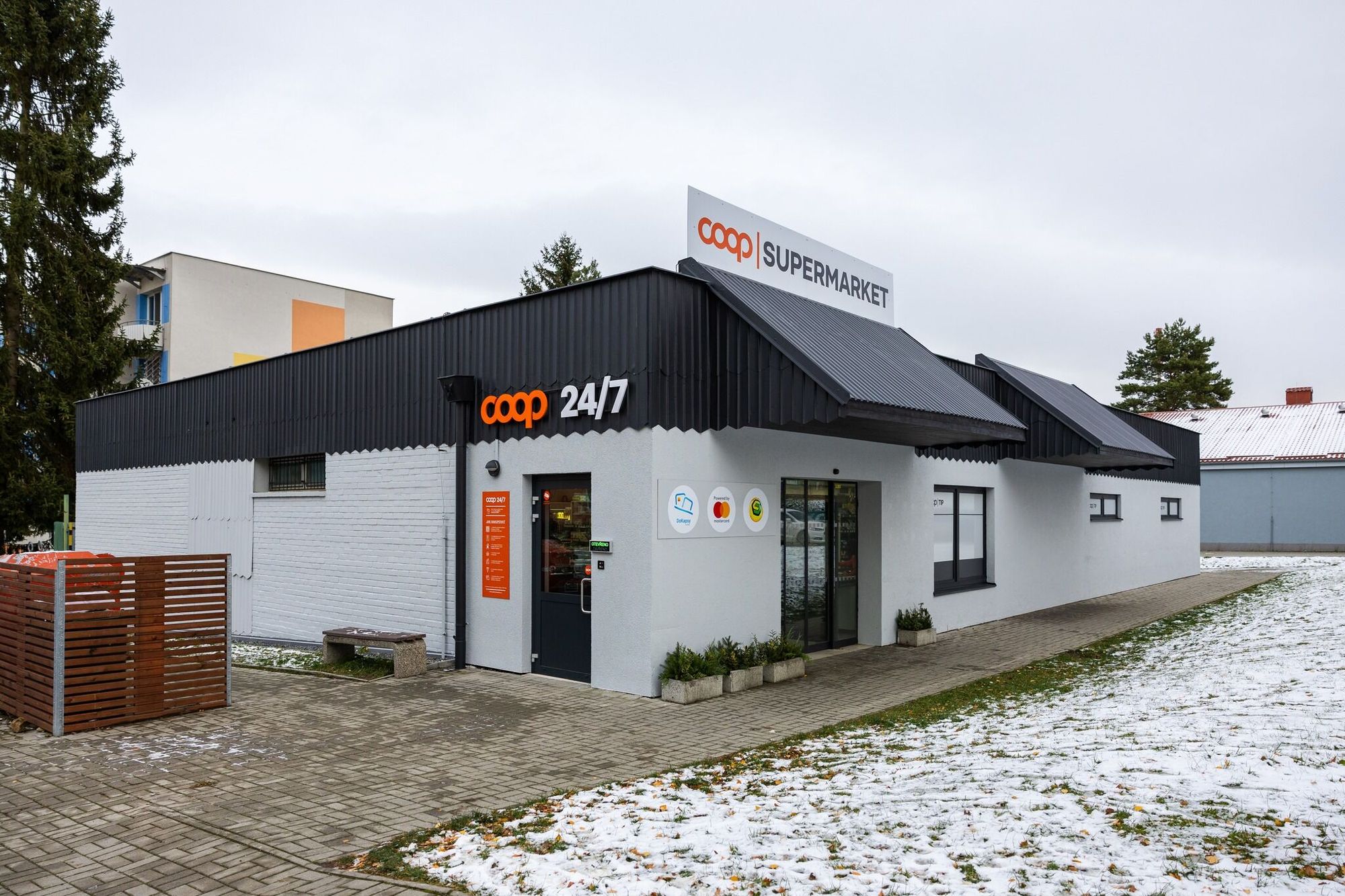
I'm already starting to understand why you're creating these innovations. Let's now break down each one of them in detail. I'd begin with the concept of eCOOP. What is it, and why did you decide to pursue it?
eCOOP is an online grocery store, but it's not a typical e-shop; it's a bit more complex. Due to our decentralized structure, each cooperative manages its own commercial activities, and we also have many local wholesale and distribution centres. When we were considering e-commerce, we were thinking about how to implement it technically. If we were like Rohlík [Czech online grocery store], we'd have one central warehouse from which distribution occurs. The disadvantage is that it comes at the expense of the local network because everything needs to be consolidated into that one place for distribution.
On the contrary, we have a very wide range of products that vary across these individual regional wholesale centres. Therefore, we can be much more regional. We pondered how to connect this and finally developed an e-shop based on the principle that when you enter the website, you choose a store. At that moment, the website is linked with the database of that specific store or wholesale centre, and you choose from the current stock. You place your order, pay for it, we prepare the goods, and you can pick them up right away.
In some regions, we offer a combined service where you can immediately select items available at the local store but also order goods from the local wholesale centre, which we'll deliver to that local store. So, the philosophy is that if you want bread or milk, you'll always find them at your local store. But if you want a twenty-year-old rum, it's available at the wholesale centre, and we can bring it to you. In some places, we're creating village hypermarkets and thus offer much greater convenience to the customers.
This led us to other topics like home delivery. But doing home delivery in regions isn't that easy like in a big city. So we brought up an idea of automated food pickup boxes. We know pickup boxes from Alza or Zásilkovna, which is great, but these boxes aren't designed for food.
We needed boxes that are refrigerated or heated, comply with food handling regulations, and so on. So, we found a manufacturer in southern Moravia with whom we tried and launched the first ones. While these boxes were technically perfect, due to these special aspects, they were expensive compared to, say, the Alza box.
So, we kept searching. Automated stores have existed abroad for some time, so we went to see them, talked to those manufacturers, and concluded that while these solutions are interesting, they have their drawbacks. The technology is interesting, self-sufficient, and functional, but it's complicated, expensive, and therefore limited, often offering a very narrow range of products.
This is usually because you have to have an exact system for placing each item so that it can recognize what you're taking. So, I thought that this might make sense on Wenceslas Square in Prague, but we're not interested in that. We needed to get it to the villages, so we teamed up with a manufacturer who was developing it in the Czech Republic, and devised the first store. We decided right away to try it out in the regions.
We chose a small store in Strachonice, and the basic premise for the store was not to shrink its products offer. At the same time, we wanted to keep the staff to serve the traditional customers during opening hours and serve the service section, like sliced meats, cheeses, and so on, which you can't do without staff because, for hygiene reasons, you can't let people slice ham themselves. So, we wanted to create a hybrid model that didn't exist here before.
"In some places, we are creating village hypermarkets."
The first aspect was, therefore, to create a hybrid store, keep it open with staff, and switch to automated mode after opening hours. Then we needed to think up identification. Amazon's system was nice, but it was so complicated that implementing it carried certain risks of errors, which you can't afford in a region where your IT guy isn't sleeping next door.
So, we chose a system where the customer enters, takes the wanted items, goes to the automated checkout, scans them, pays with a credit card, and leaves, reducing the risk of technological error. Of course, there's a greater risk of human error, but we control that through security cameras which can recognize customer behaviour. Initially, we monitored it through a counter, but nowadays primarily through AI, which, when something happens, sends a signal to the operator, who decides whether it's a real or false alarm and can react to it.
We also set up the counter so that the operator can communicate with the customer, and the customer can respond or ask for advice as well, which is incredibly important. So, we don't have unmanned stores but stores with remote service. This is also crucial from a legislative point of view because the legislation doesn't allow, for example, the sale of alcohol to people under the influence of addictive substances, so we can remotely monitor the status of these people without any risk to the staff.
Another aspect was the very sale of alcohol, which, whether we like it or not, still accounts for a large percentage of sales in those stores. All those foreign systems don't sell alcohol because they can't identify age. So we said because those stores are hybrid; young people can shop during normal working hours, and in automated mode, it's only 18+.
We verify the age through a bank identity, which is something that doesn't exist in other European countries. People over eighteen must download a mobile application, which they pair with their bank identity, and the application generates a QR code, which they show at the door. This system is anonymous, but if something happens, we can ask the bank for identity and deal with it further.
So, do all four concepts (e-shop, pickup points, automated pickup boxes, and stores with remote service) now operate in various combinations?
Yes, and sometimes they work together. One of the smallest stores and also the only one completely without service is in the village of Kolín in eastern Bohemia. It wouldn't be profitable for us to operate a store with staff there, but the mayor said the village wanted one, and they were willing to participate. So, we devised a partnership model where we equip the store and deliver goods, and the village takes care of staffing. We then share the profit with the village. Such collaboration fills us with great optimism that it's possible, even in the smallest store.
We also strongly believe in a short retail chain. For us, it's crucial that what's produced in a place is also consumed there. But for that to happen, there must be enough services available. That's why we've launched cafes; just a few tables, a coffee machine, pastries, sandwiches, and people can sit with their neighbours and have a chat. Often, it only takes a little, and the perception is completely different.
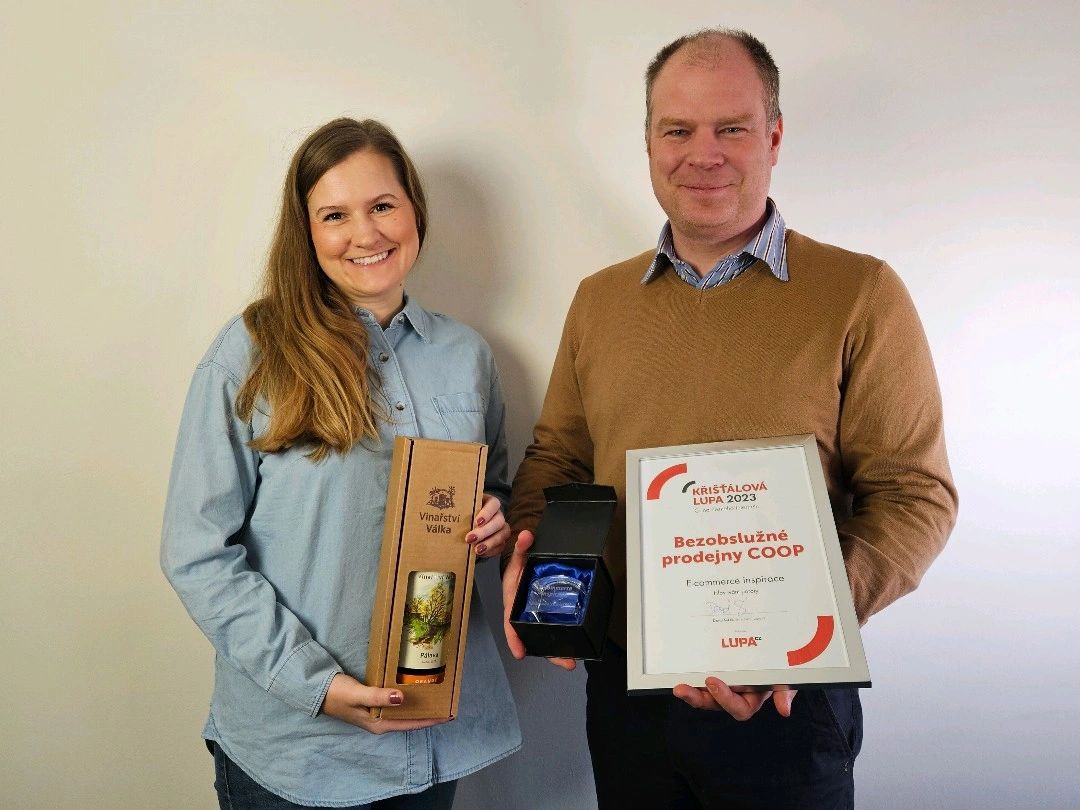
Now I fully grasp what you were talking about at the beginning regarding the cooperative and why it's so important. It's amazing to see how your activities go beyond just ordinary profitability and have such a positive impact on sustainability. You're demonstrating this on a practical level, and you have positive feedback from customers.
Yes, it's thanks to that decentralization. When the region and partners from the municipalities have the opportunity, a lot can be done today, and local distribution can be much simpler. However, you'll never include all local producers because the store isn't inflatable, and you have to act responsibly. Some of them, for example, aren't ready for selling, so we often help them with packaging, explain how barcodes and other things work.
If we all come together, with the state's goal being better services and our goal being better retail, the region will thrive, and everyone will benefit from it. I'm jumping from topic to topic a bit, but I want to show the complexity of the whole issue. For example, in the store in Hradec Králové, we created refrigerators for beer kegs, and when you organize an event and want beer, we'll lend you a keg and equipment, prepare a chilled keg, and you can have it in your garden and celebrate. This service is also used by small pub owners, when they need extra beer quickly, because regular suppliers won't bring them one keg from the brewery instantly but they can go to us, take it with their car, and continue until the next supplies arrive.
We also organize farmers' markets at the stores where we invite producers who aren't in our assortment to showcase their products within the store. The goal is really that ecosystem where people come to us, of course, spend money, and thanks to that, the region thrives. For the same reason, our colleagues in Britain, in addition to retail stores, operate pharmacies, travel services, funeral homes, and kindergartens because they say, "You are our member, and we must offer you such a range of services that you spend as much as possible with us because it's your company."
You won't go to someone else when it's your company. But you have to have an offer from your company to satisfy your needs there. That's why we're doing something similar. In addition to retail, we also have gas stations, contactless car washes, food factories in some regions, we operate a mobile operator, an e-shop, so we also try to provide a broader range of services so that the customer finds as much as possible there.
"If we all come together, with the state's goal being better services and our goal being better retail, the region will thrive, and everyone will benefit from it."
As we discussed earlier the question of what a member gets out of it, it varies. It can be from a special offer of products, special prices, to benefits, where depending on the purchase volume, you get a percentage back, which is credited to your virtual account, and then you can use it again for purchases.
We haven't talked much yet about customer feedback. Does it work from this perspective? Do you see any challenges?
There are a huge number of challenges, but we see that it works. Automated stores are showing us to be a functional model with measurable returns. These things aren't done for us to get rich, but retention is very important. The increase is relatively small, but given the volume, it's important for us. On the other hand, for example, with those small stores, it's a way to keep them because when the economy was bad before, and with each wage increase, those numbers worsen, just adjusting the working hours with staff, optimizing it to when people physically go there the most and then switch to the automated mode for the rest.
You also don't get rid of staff because we still have a shortage of staff, so you just move them to another location. Then employees have what they had or even more because they are rewarded based on the store's performance. For locals, the comfort also improves because they no longer have to worry about the store being closed when they come home from work. However, it's not just about the technology; it's also about product offerings, supply, maintenance, and operation. That's the complicated part.
When you introduced remote service in the stores, was there a moment when there was bad feedback, and you had to take a step back? How did you test it?
Honestly, we went with a trial and error approach because we were introducing all three of these things for the first time, and therefore, we didn't have a reference frame. In the beginning, we always have to ask ourselves if there's a fundamental systemic problem that means it can't work, and we didn't encounter that. We encountered many operational problems, but those are solvable. Yes, sometimes you have to have downtime to fix it, but it's a matters of hours, at most days. With those automated stores, we're almost running without interruption; we're still fine-tuning the e-shop, and those boxes were the easiest to fine-tune.
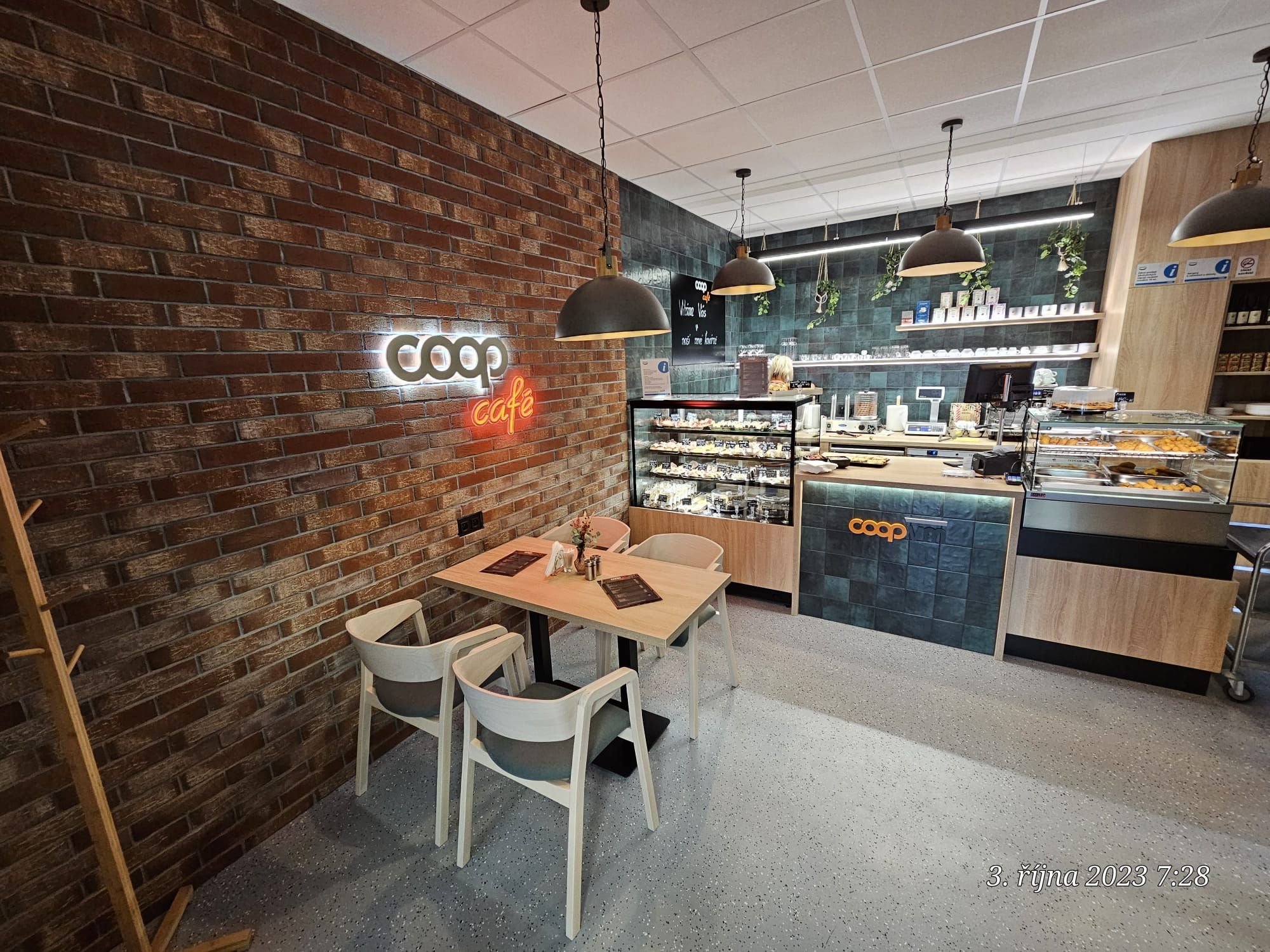
I'd like to talk about the future. What innovations do you plan for the future? What's the next step for you?
I have a lot of ideas, but that doesn't mean they'll all succeed. Currently, the stores still occupy us because we haven't reached that maximum. So we're focusing on making the service as efficient as possible, and that will take some time. With each additional store, you add something, and then you have to wait for feedback for a while. It may happen that the store we open in two years in this mode will be completely different from the one we opened now. Just with AI alone, it's a huge leap. We're increasingly addressing security, and that's certainly one of the directions now.
What do you see as trends in retail that are applicable to you and you could bring them to the COOP group in the future?
When I simplify it, we've already implemented the best things. Because our stores have somewhat surpassed the times, all those solutions are still at the level of Amazon GO. We have dozens of suppliers from around the world who are interested in supplying us, but we'll end up finding that they're actually more expensive and less functional. On the contrary, people come to us to get inspired from abroad, so it works both ways.
So, efficiency of service and especially cost reduction are significant trends.
Either reducing costs or increasing comfort. It depends on the type of store. In the city, it's more about increasing comfort, and in the village, it's about reducing costs.
The last question I ask every guest is, what's your biggest design challenge that you would like to solve?
Pinpointing a specific issue is difficult, but for me, it would be how to make the experience as enjoyable as possible, eliminating as many problems as possible, and still maintaining the human aspect in it. I really believe in that community, and I want that community to have enough opportunities and enough services in their place of residence. But how to connect all of that to make it functional, simple, not expensive, elegant, that's the challenge.
The full interview with Lukáš Němčík in Czech:
Minimum Viable Podcast is brought to you every two months by the design studio Lighting Beetle*, which focuses on creating an exceptional customer experience.
Design is all around us. Minimum Viable Podcast explores design with a small “d” – the one that looks for solutions to people's problems. In it, together with our guests, we address topics that are related to design, but we normally do not associate with it. Thanks to the Zeldeo production studio and our production manager Mojmír Procházka for the cooperation.
We are looking forward to every listen, follow, share, and suggestion for improvement. You can send us your tips for interesting personalities with whom we can talk about design to podcast@lbstudio.sk.
Enjoy!

